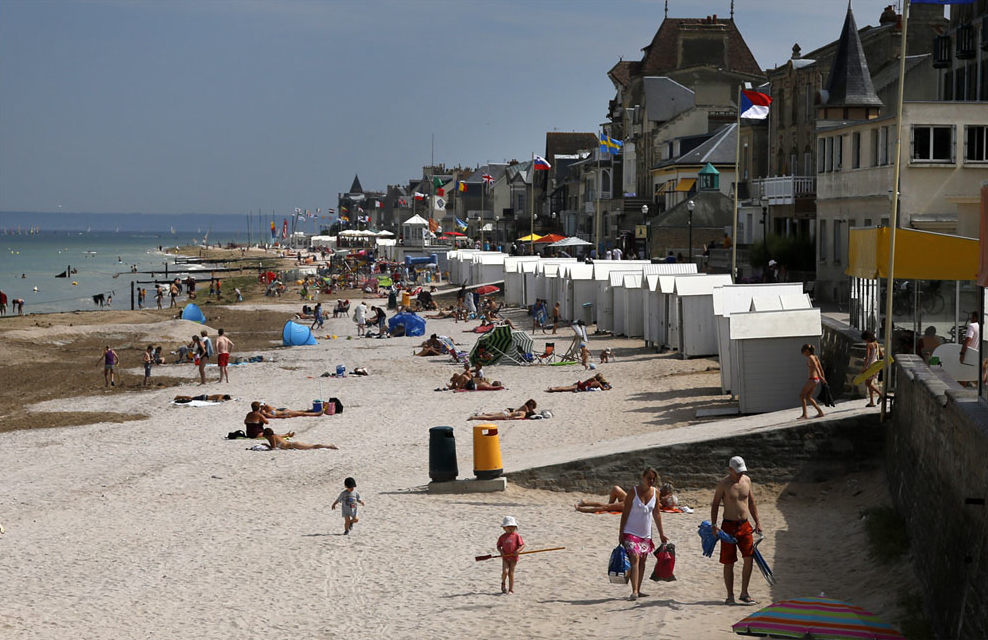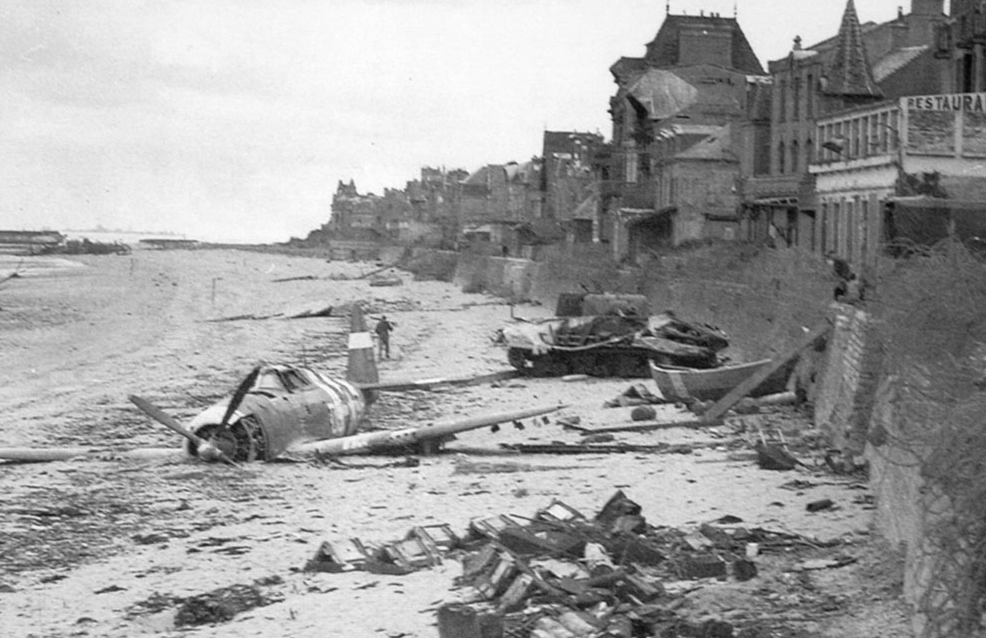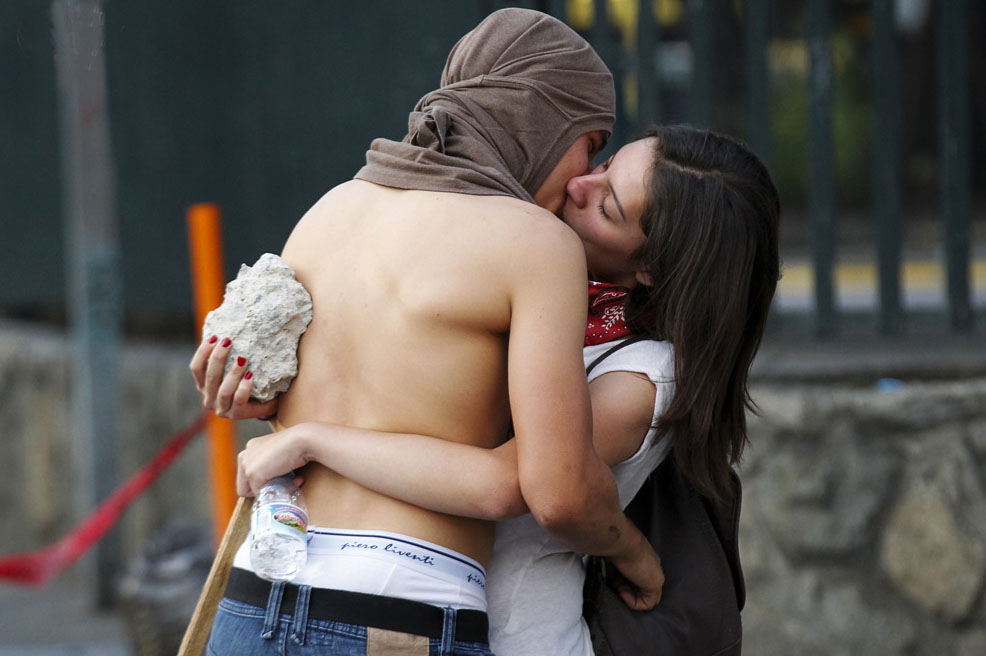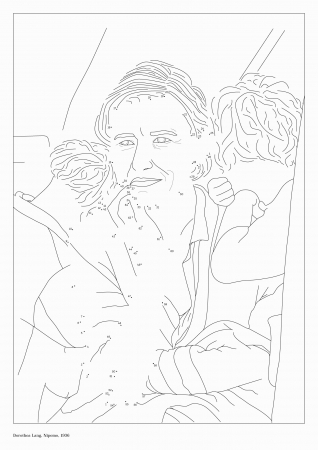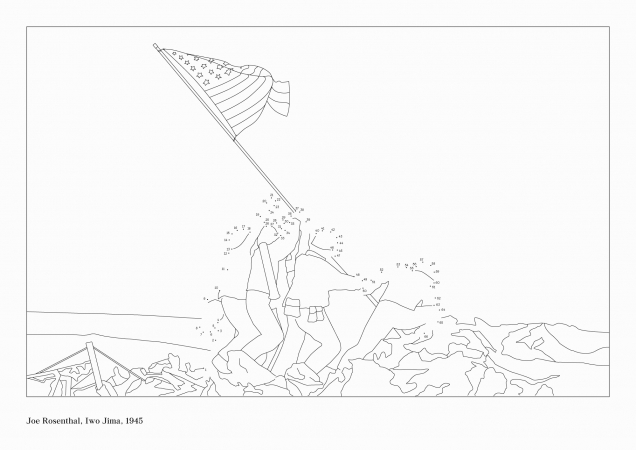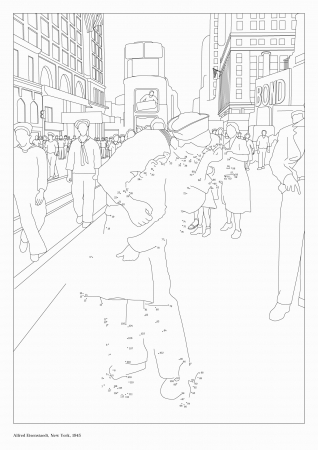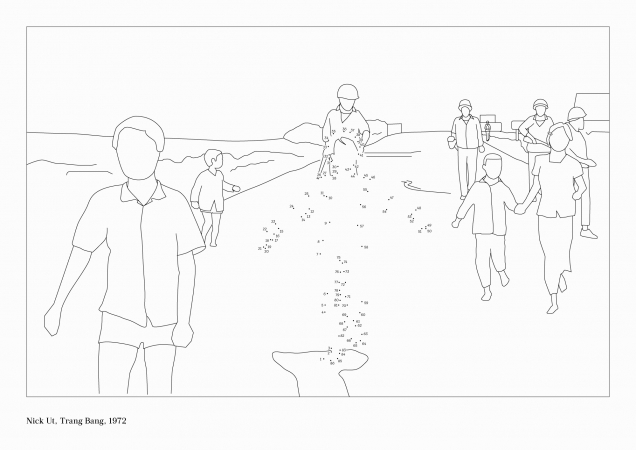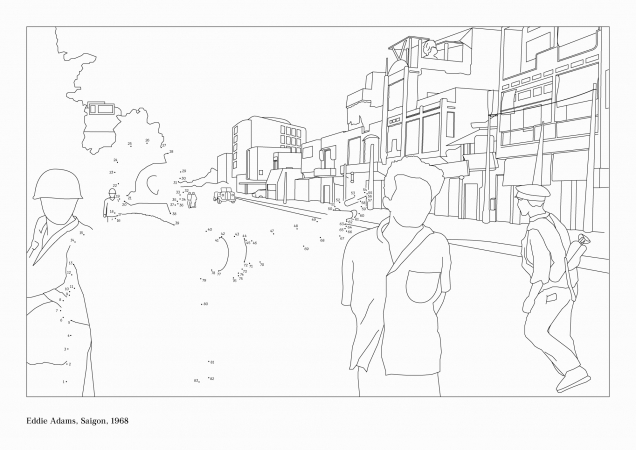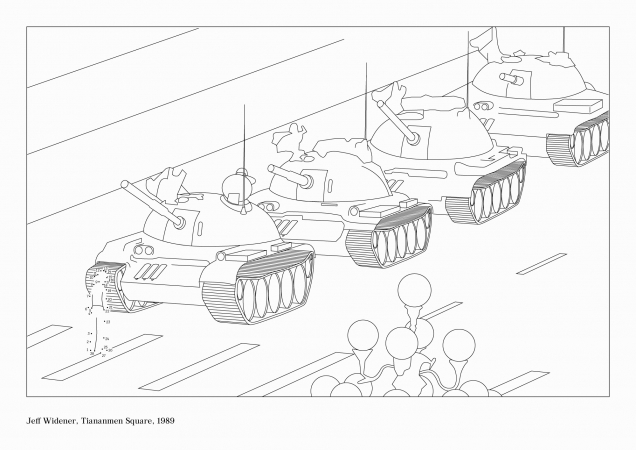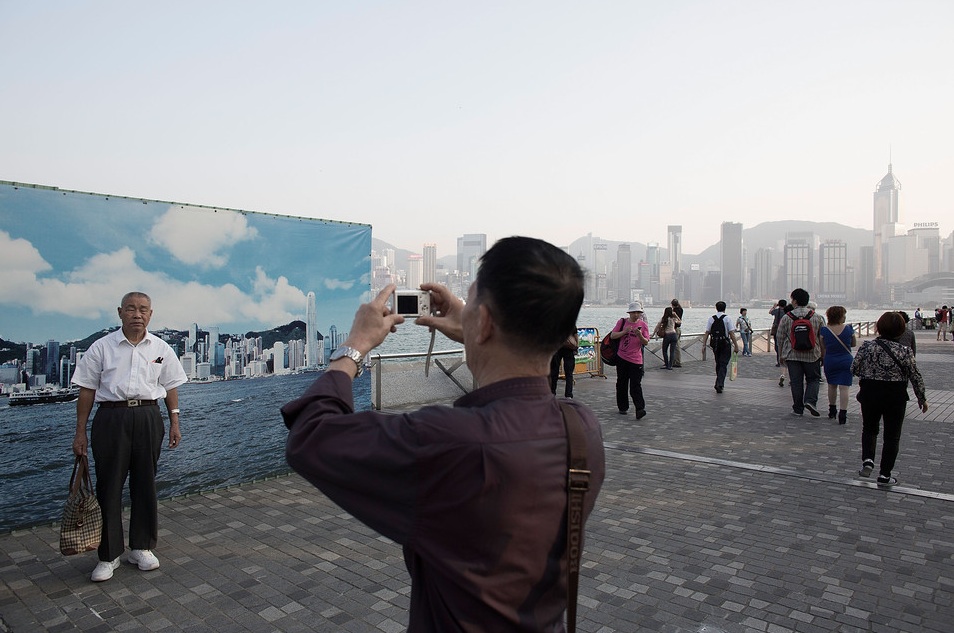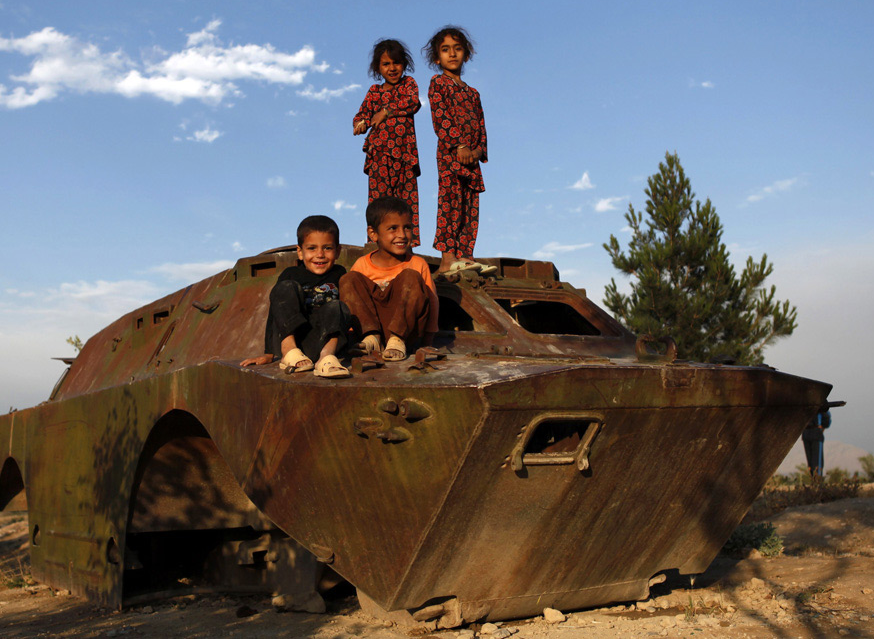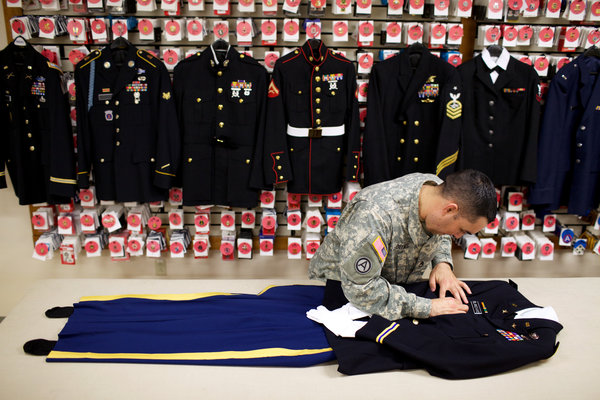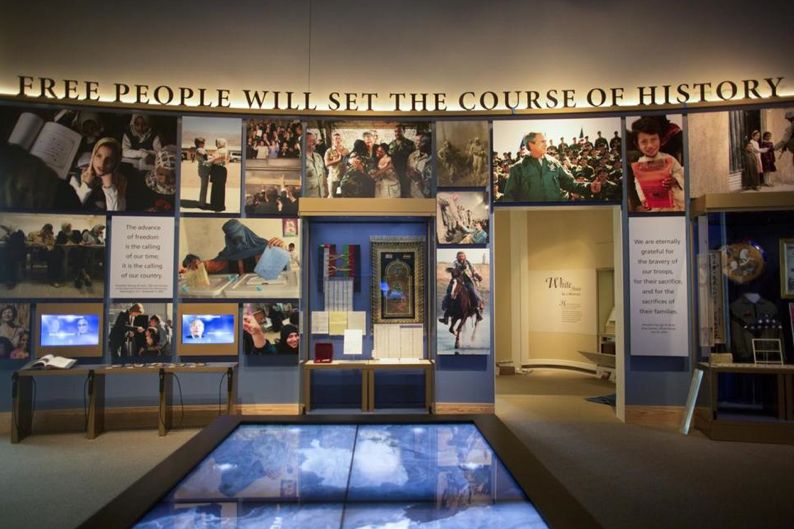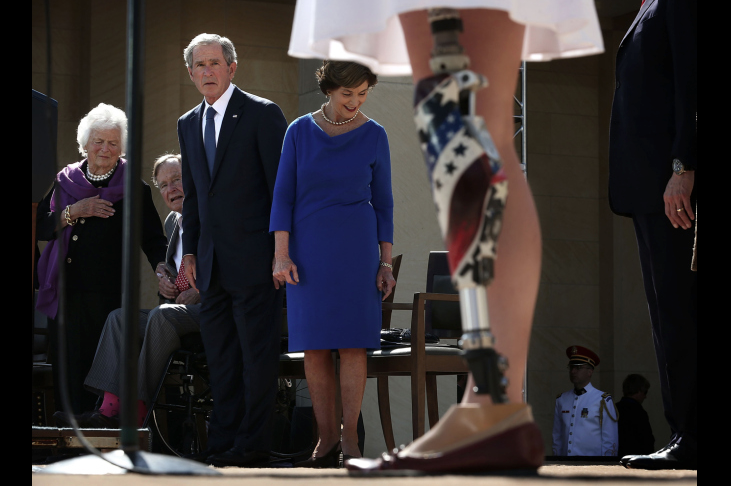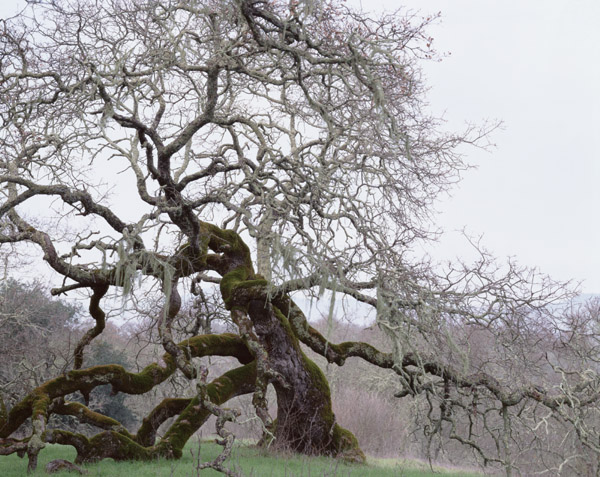
We take lots of photographs these days. Photojournalists account for thousands every day and hundreds of thousands every year, but their output is dwarfed by the number of images taken by non-professional, most taken with a mobile device like a phone camera. The photograph above shows a printout of the photographs uploaded on Flickr in a single 24 hour period in 2011 and the number of images taken in a given day surely exceeds what we see in this one photograph.
There is nothing particularly new about taking lots and lots of photographs. We have been doing this for nearly a century since the camera became an affordable commodity and Kodak convinced us that it was a necessary accouterment to bourgeois life. The so-called “digitial revolution” has made taking photographs easier, not least because just about everyone carries a mobile camera of some sort, but also because photographs are now simpler to produce and to circulate—the darkroom is now an antiquity and the family photo album has been replaced by a website of one sort or another. It is thus a bit odd that some bemoan the new found abundance of photographs, such as we find in a recent NYT Style Magazine article titled “Remembrances of Things Lost.”
In the most general sense the complaint is not new. The reliance on photographs will undermine our capacity for remembrance. This, of course, was Plato’s protest against writing (see his Phaedrus) and which has resurfaced over and again across the millennia with the development of each new technology of mediation and representation. And, of course, it is at the core of the iconoclastic critique of photography that we can trace in almost a direct line from Baudelaire to Susan Sontag. And, equally of course, it is wrong—or at least grossly simplistic. Yes, changing technologies alter the ways in which we practice and experience memory. The shift from orality to literacy is a case in point, but what was lost was not memory per se, but a particular way or register in which memory was practiced and understood. And the same could be said for every subsequent development of a new technology or medium of representation. The bigger problem, however, is not that photography – digital or otherwise – has undermined our capacity for remembrance, but that the mindless repetition of this argument underwrites a critical discourse of photography that minimizes—if it doesn’t miss altogether—the power and capacity of the medium to help us think with and through such images as we encounter the problems and possibilities of modern life. And this is not least with respect to how the present—which in some measure is the only thing we can actually photography—functions to help us to (re)member the relationship between the past and the future in powerful and provocative ways.
Consider, for example, this photograph published on the front page of the NYT—both print and on-line—on the same day as the above article lamenting the loss of remembrance animated by contemporary photographic practices.
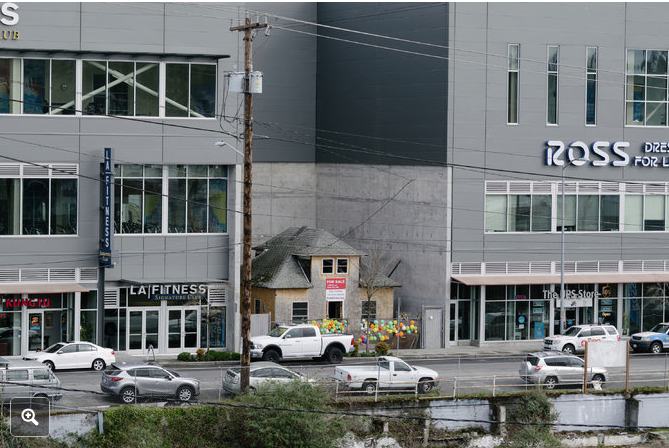
Captioned a “shrine to defiance,” the photograph shows a small bungalow in Seattle that seems to have stood in the way of progress. Hemmed in by high rise buildings that all but touch its outer walls, and otherwise bordered by a busy public thoroughfare, the house is altogether out of place—and out of time. It gestures to a past – one can imagine a row of such houses that once stood here – even as it points to the inevitable future that will soon be upon us as modernity move relentlessly forward. But it does so with an interesting edge. Notice that it is the bungalow that offers up the slightest hint of color—of individualism—in an otherwise and uniformly muted, almost black-and-white world. It will not survive for long, at least not in that space, but what the photograph testifies to is the fate of the unique individual in an increasingly modern society where progress refuses to stand still. But more, it also invites consideration of the tension between a more colorful past and a more uniform, colorless present, and to the tint and tone of the future that it portends.
In short, this second photograph complicates our sense of what it means to remember and how we do it, and it does so in a powerful way. Not every photograph will do this, of course, but the potential is there and enough will achieve that potential that it is a profound error to repeat a tired argument about how the medium is a problem for remembrance without also emphasizing its powerful affordances otherwise. Our photographic practices have changed over the years—and there is every reason to believe that they will continue to do so in the years ahead; the more important point is that it is long past the time at which we should change the ways in which we talk photography as a cultural practice and phenomenon so as to understand it as the important mode of public art that it is in all of its forms.
Credit: Erik Kessels/Foam at Amsterdam; Ian C. Bates/NYT
1 Comment



